My Beer, Your Beer
Franconia, in central Germany, has the highest concentration of breweries anywhere in the world. But rival producers don’t get in each other’s way.
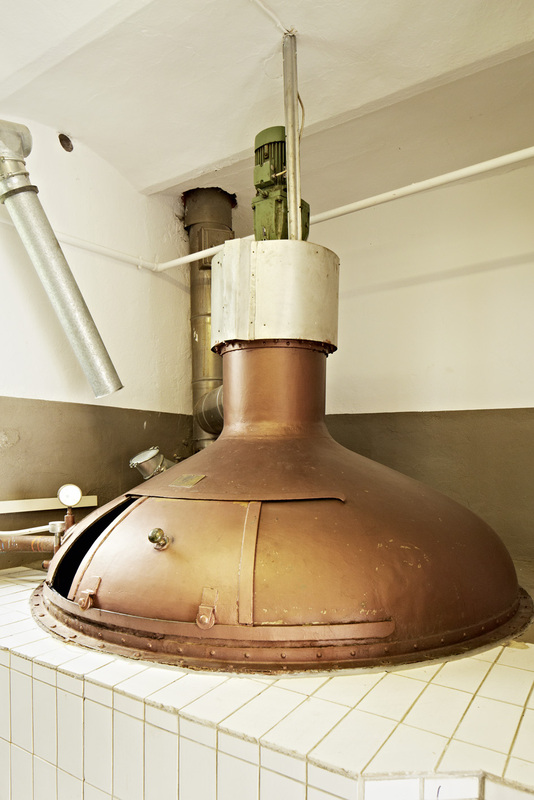
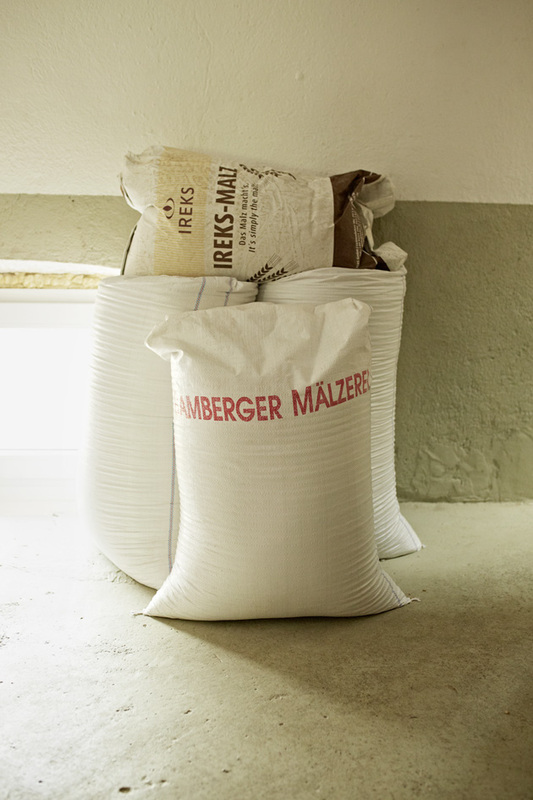
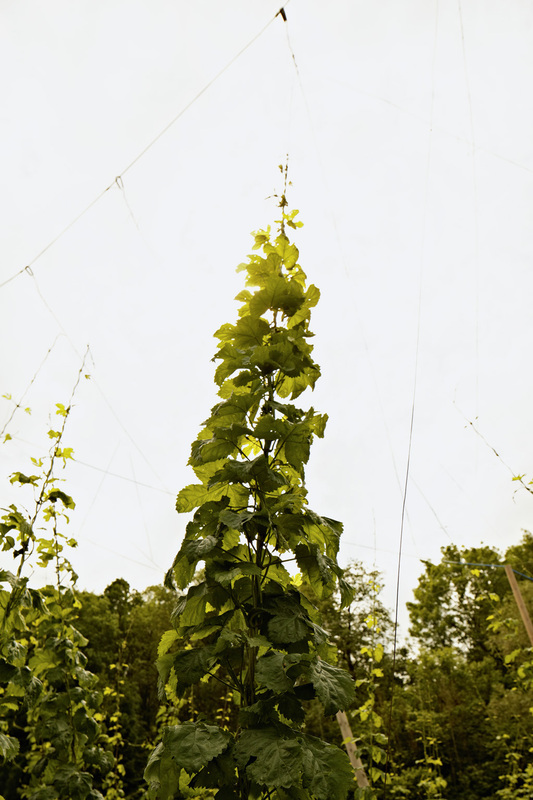
Hops and sacks of unshredded malt, which Johannes Hübner crushes himself, and a wort kettle
If the rival brewmasters in Wattendorf want to know what the other side is up to, they can simply cross the road and order a beer and a snack. “I don’t do that, though,” says Gerd Dremel. “It never happens,” says Johannes Hübner. However, if a club of which Dremel happens to be a member meets at Hübner’s, Dremel is more than happy to attend; and when Dremel holds his grand summer festival, Hübner comes and joins in the celebrations.
The two men are not just competitors, they are also neighbours. The Dremel brewery stands in the very centre of the village of Wattendorf, on the main street, a mustard yellow and white house at No 21. Opposite, at No 28, is the Hübner brewery and inn in pale grey and white. Hübner’s phone number is 207, and Dremel’s is 271. Wattendorf consists of a main road, a handful of lanes and alleys, a church, a well and a small fire station. It takes five minutes to walk from one end to the other, and a tour of the entire village does not take much longer. Wattendorf is one of five settlements in the community of the same name, which is the smallest in the administrative district of Bamberg in Upper Franconia. There are 186 people in the village – 103 men and 83 women – and 161 of them are over the age of 16.
But having two breweries in the same place is not unusual in Franconia. While beer consumption has been falling throughout Germany since the 1980s, northern Bavaria has almost 300 breweries and the region produces about 1,000 different types of beer. Upper Franconia, which is in northern Bavaria between Coburg, Bayreuth, Erlangen and Bamberg, has no fewer than 172. Statistically speaking, this means there is one independent brewery for every 6,159 inhabitants of Upper Franconia. Most businesses are small and have been run by a single family for generations, typically together with an inn; each brewery produces the beer that is served at its own bar.
Inside the Dremel brewery, Gerd Dremel is hosing out a shallow copper pan. In larger breweries, the pan used to cool the hot wort, or unfermented beer, has long since given way to low-maintenance technologies, but this brewery was first mentioned in documents from 1773. In 1865 it was taken over by the Dremel family. Gerd Dremel, 39, trained and worked in breweries around the region and has run the business on his own since his father’s death. While the Dremels once used to brew 50,000 litres of beer (88,000 pints) a year, nowadays they produce just 850. “I imagine they make a similar amount on the other side of the road, don’t they?” asks Dremel, as though he didn’t know the answer perfectly well.
Over at the Hübners, there is a sweetish scent in the air. The brewer heaves a sack on to his shoulder and pours malt into the shredder. It is made of wood and has been used for decades. Hübner is 32 and earned his master craftsman’s certificate six years ago. He took over the business from his father, Johannes, who took it over from his father, Johannes. Hübner-Bräu produces about 100,000 litres of beer a year, as it did in his grandfather’s day. “We have always produced the same output,” says Johannes Hübner. “Some people in the village have always gone to Dremel’s; the others have always come here.”
The prices are the same. In both breweries, a seidla, the half-litre beer stein that is widely used in Franconia, costs €2.20 at the bar – substantially less than in nearby Bamberg. “Country folk keep a watchful eye on the price,” says Hübner, which leaves little room for adjustment. Do the Wattendorf brewers fix the prices, rather than competing? Hübner laughs. “A beer cartel? No. But when things become more expensive, whether it’s the raw materials or energy costs, everyone feels the pinch. So if the other guy starts charging 10 cents more, you’ll take 10 more, too.”
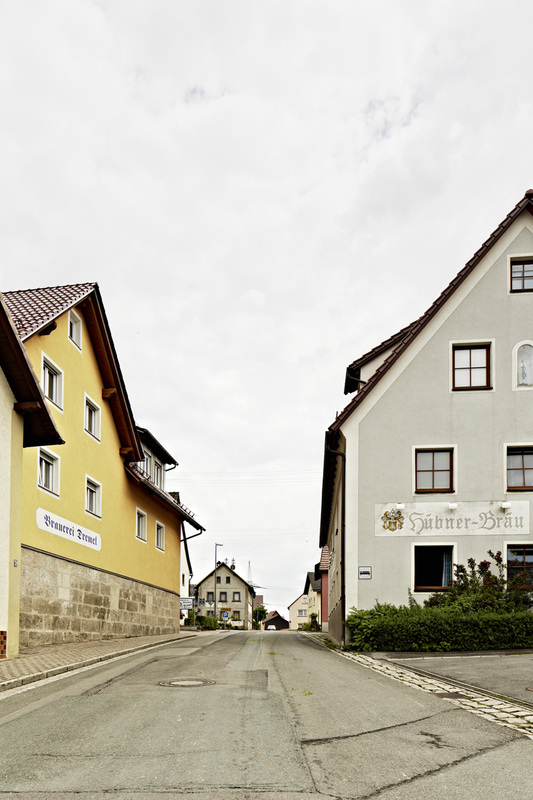
Neighbours in the Upper Franconian village of Wattendorf: Gerd Dremel and Johannes Hübner
The way it was, is and always will be
Dremel and Hübner are one-man entrepreneurs who produce small quantities of craft beer by hand. They both source their raw materials locally. Both produce three standard types of beer, plus seasonal ones such as bock and black beers. And the food they serve in their respective inns is similar too: hearty regional dishes and copious snacks. Hübner’s father and Dremel make the sausage and the ham themselves.
Normally, rivalry leads to competitive pressure. But in Wattendorf, “we each have our own customers,” says Dremel. “Some go over there, the others come to us. That’s just the way it is.” And Hübner says: “He does his own thing, and I do mine.” Each brewery has its own style, and that has been the way of things for generations. Dremel’s beers are naturally cloudy and have a roasted flavour. Hübner’s are strong and aromatic. “I don’t experiment with my standard types,” says Hübner. “People around here want to drink the stuff they know.”
“Direct competition forces you to keep coming up with new, innovative products, to give you a key advantage over your rivals,” says Kilian Bizer, director of the Institute for Small Business Economics at Göttingen University. For small breweries, this can become a balancing act. “On the one hand, I need to satisfy the traditionalists among my customers; on the other hand, I need to win over new customers.” If you produce too many new things, says Bizer, you risk damaging your brand.
Wattendorf’s brewers are sticking to their traditions, but they are also trying out new ideas. Dremel has added a wheat beer to his traditional range and he recently brewed his first black beer. “You go by what you yourself like, and if people don’t drink it, you simply stop brewing it.” Dremel thinks it is nonsense to keep an eye on what brewers are doing elsewhere in the world. “After all, it has to work here, in our region.” Hübner invented a new type of wheat beer while he was training as a master craftsman, and each time he brews bock he tries out different types of hops. He is currently considering brewing a pale ale for summer. Hübner reads specialist journals, recently attended a seminar for brewers, and once a year meets up with colleagues with whom he trained. “Wherever you go, you can always get new ideas.”
Each of the men does his own thing, but each also keeps an eye on what the other is doing – or not doing. Hübner mainly serves his beer in his own inn, straight from the barrel. He also supplies kegs to a few other inns, and tourists can take away five-litre kegs. Dremel bought a bottling machine a few years ago. Since then, restaurateurs from farther afield have been ordering crates of beer from him. Mostly, however, Dremel supplies markets. This has increased the brewery’s sales – and at the same time made it more widely known, which in turn brings more customers to his premises in Wattendorf. “Two-thirds of our beer is now sold off the premises,” he says. “The bottles are my biggest bonus.”
Dremel is also exploiting a niche with the food he serves: chicken and shish kebabs from the large outdoor grill. “I might give fish a go, too.” And twice a month the Dremels have a pizza day. “There are no Italian restaurants out here in the country,” says Dremel. “If you want to eat pizza, you have to drive a long way. We have a large catchment area.”
“Pizza? We’re not Italian,” grumbles Hübner Sr in the kitchen of the inn over the road. “The people who come to us want Franconian cuisine, and that’s what they get.” Hübner Jr goes to the serving area and draws himself a mug of beer. He also intends to launch bottled beer, but with a different approach: “I’m having the beer bottled by another brewery, a few kilometres away. That way I save space as well as the money for a bottling machine.”
Neither of the businesses needs to make major investments just now anyway. Growth is a goal, but they are in no hurry. “Step by step,” says Hübner. His brewery is now almost running at its limit, in terms of space and the technology it uses. “If the brewing equipment packs up on me, I’ll have to modernise it completely anyway. Everything will become more highly automated and we’ll be able to produce more.” But the old plant is sturdy, he says, and running smoothly. So why spend a lot of money on something bigger in the hope that it will eventually pay off? Better to produce the volume you can comfortably manage.
Dremel agrees entirely. “Growing slowly is healthy.” Besides, the budget for investments is limited. Things always need doing on the premises and he recently refurbished the butcher’s shop. But he has found a cheaper way of purchasing new technology: he usually buys his equipment second hand.
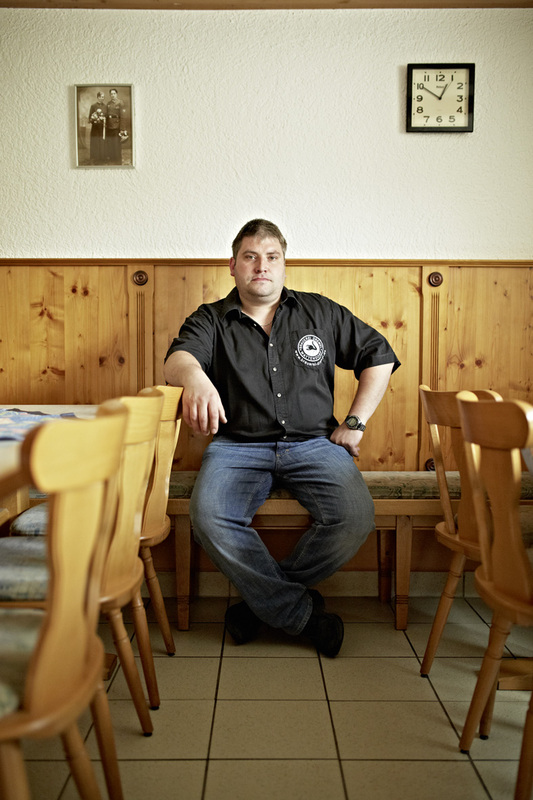
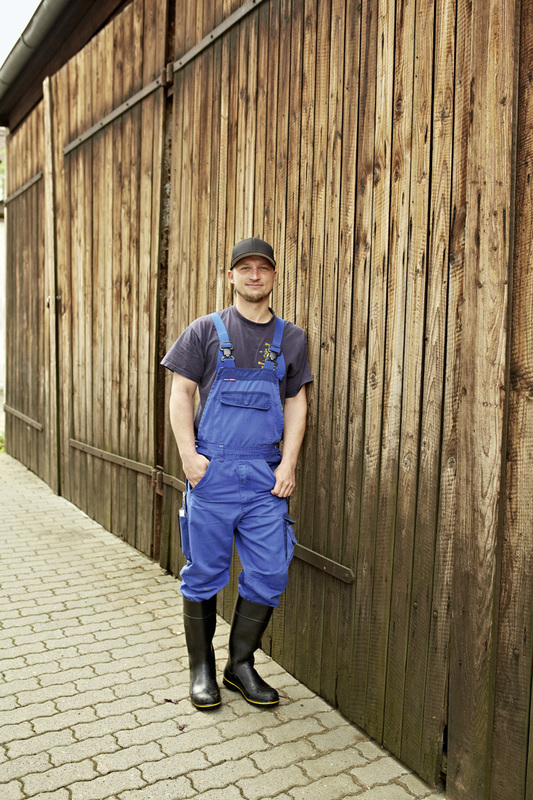
Peaceful coexistence: ‘Some people in the village have always gone to Dremel,’ says Johannes Hübner, right, about Gerd Dremel, who lives on the other side of the road. ‘And the others have always come here’
Advertising? Why bother?
Marketing is uncharted territory for the Franconian microbreweries. There’s too little money, certainly too little time, and the demand is already there. “Your typical Franconian brewer believes that marketing will only distract him from what really matters: manufacturing the product,” says Norbert Krines, who blogs about Franconian beers.
“Word of mouth is the best form of publicity,” says Dremel. “Nothing is the topic of more chit-chat than beer.” This discussion extends to cyberspace. Hübner-Bräu can be found on Facebook, and the Dremels recently overhauled their website. They even publish a newsletter.
Neither man is worried about the future. “The renewed interest in regional fare has been a huge advantage for us,” says Dremel. “Alcoholic drinks retailers draw attention to the fact on their shelves in large letters. People look out for local brands and young people also prefer to drink Franconian beer.” The regular pub-drinking culture that once existed, with men sitting around all evening every night, consuming large quantities, is virtually dead, according to Hübner. Different working hours, stricter alcohol limits, and the ban on smoking in public places: “You notice all these things, of course,” he says. But younger people living in the country have nowhere else to go. “So fresh customers keep growing back.”
Pub and inn culture is very pronounced in Franconia; locals enjoy going out for a meal and drinking their seidla with it, whether at lunchtime or in the early evening. “For us, beer is not a stimulant,” explains Günter Dippold, a historian and guardian of cultural heritage for the regional government of Upper Franconia. “Beer is a type of food, part of our culinary culture.” According to Dippold, a Franconian community without a brewery would be “like a village without a church”.
Even so, the dying-out of the breweries has not passed Franconia by. Over the past two decades, about 100 businesses have given up. There are several reasons, Dippold believes: “Not finding a successor; lacking the money to make necessary investments; cut-price bargains within the beer industry; beer being sold at every corner; and large corporations wanting to buy up small competitors.” The small businesses in the villages were not attractive enough for the big breweries, however. Meanwhile, a counter-movement has set in, with dozens of combined inns and breweries launching. One brewery is also a butcher: Metzgerbräu in Uetzing. The village has a population of some 530. It is just 40 kilometres from Bamberg, and seven from the nearest town, Bad Staffelstein.
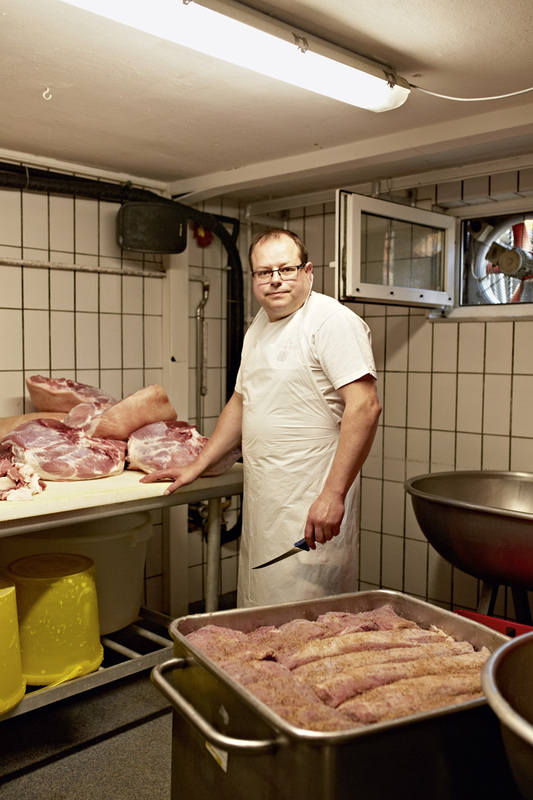
Sausage and beer? A perfect mix!
Manfred Reichert, the 47-year-old boss of Metzgerbräu, hangs some ham in the smoke cabinet and puts more wood on the fire. Then he takes off his white rubber apron and climbs the stairs to the brewing kettles, “to check on the beer”. His company name reflects the underlying idea: part butcher’s (Metzgerei) and part brewery (Brauerei). It was not the original plan. In 2002, Reichert bought a book about smoking hams and was offered a reduced price on a book about brewing beer, so he took that one too. “I’d always been interested in brewing,” he says, “and butchers and brewers have one thing in common: they both need a large boiling vat.”
Little by little, Reichert developed his own version of Franconian lager in a butcher’s vat. When more and more friends and acquaintances started asking him for a keg and the requirement to hold a master craftsman’s certificate if you wanted to operate a brewery was abolished, he registered his second business in 2004 – even though there were already nine breweries in the villages around Bad Staffelstein. “What’s the butcher up to now, with his sausage vat?” the master brewers mocked. Reichert was undeterred. “Ham, sausage and beer,” he said to himself, “those go together perfectly.”
In 2011, he built a second storey on the family home, which also houses the butcher’s shop. He installed professional brewing equipment and five stainless steel tanks, bought a bottling plant and built a refrigerated room. He now produces more than 100,000 litres. Little of this is drunk in the village itself, he says. His main customers come from all over the region, and there are lots of tourists and beer fans from across Germany. One reason why Metzgerbräu is so well known is Reichert’s third business venture: when he was building the brewery, he applied for a licence to serve beer, and set up a small inn alongside the brewery.
Patrons often sit with a snack and a beer, watching Reichert and his staff brewing the beer and asking them questions. Reichert answers these, and later takes his guests down to the smoking chamber where he cuts them slices of ham to sample. People who come and collect the beer themselves pay €1.70 for a litre bottle of Metzgerbräu. At the bar, half a litre costs €2.10. Reichert makes a third of his turnover on beer and two-thirds from the butchers. But that’s only for the time being, he says – because profit margins are substantially higher for beer. “If I buy a kilogram of meat and turn that into sausage, beer works out as the better business.” Also, butchers are facing increasing competition from supermarkets. His combination of craft trades means Reichert is well positioned. “Brewing benefits from the butcher’s shop, and the butcher’s business benefits from the brewery.” People coming for beer buy meat products, and vice versa.
In the Metzgerbräu cellar, Reichert’s sister also runs a tiny shop, the only one in the village, providing everything that locals and holidaymakers alike need, from coffee and corn starch to anti-dandruff shampoo and hiking poles. Recently, Metzgerbräu also became a guesthouse with two guest rooms in the attic.
Reichert has positioned himself as a brand. In addition to quality, he guarantees a sense of homeliness and authenticity. “I am the brewery” is the marketing strategy. “Manfred is always around, in his rubber boots and his white apron,” he says of himself. “That’s all part of Metzgerbräu.” Anyone drinking the butcher’s beer is consuming a story, a philosophy. “If people don’t like the brewer,” he says, “they won’t like his beer either. It’s as simple as that.”